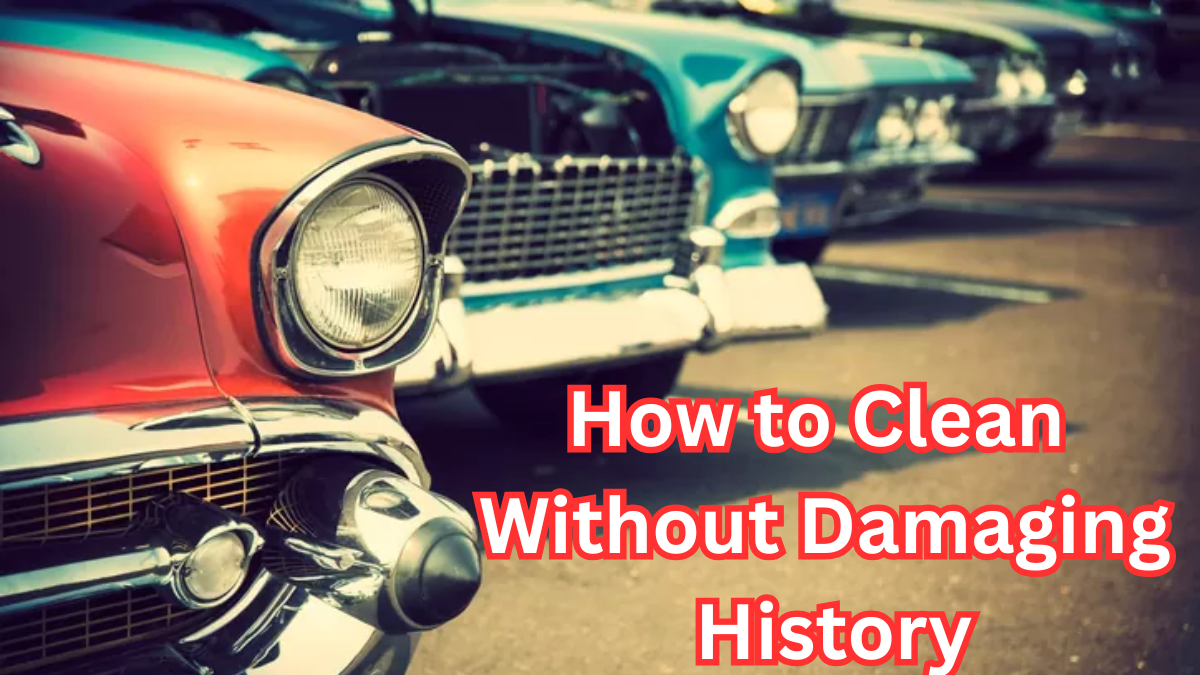Preserving the elegance of a vintage car is like safeguarding a piece of history. Every curve, emblem, and patch of chrome tells a story from another era. But cleaning these classics isn’t your typical car wash. It requires gentle hands, thoughtful methods, and tested preservation techniques.
Whether you’re prepping for a show or simply cherishing your ride, this vintage car detailing guide will help you clean your classic without compromising its integrity.

Why Vintage Cars Need Special Care
Unlike modern cars that use advanced coatings and durable materials, vintage vehicles were built with older, more sensitive components. These classic machines demand extra attention when it comes to cleaning.
Common Vulnerabilities in Vintage Cars
| Component | Reason for Sensitivity |
|---|---|
| Original Paintwork | Lacks modern protective clear coats |
| Chrome Trim | Prone to pitting and corrosion |
| Upholstery | Often made from natural fibers or leather |
| Dashboard Panels | May become brittle or crack with age |
| Engine Bay | Exposed to elements, requires gentle care |
Step-by-Step Vintage Car Detailing Guide
Here’s a detailed walkthrough for cleaning your vintage vehicle safely, using proven classic car cleaning tips.
1. Start With a Gentle Rinse
-
Use a low-pressure hose or a soft sponge with a bucket
-
Avoid high-pressure sprays that could strip old paint or damage seals
-
Use lukewarm water to prevent material shock
2. Use pH-Balanced Cleaners
-
Choose pH-neutral shampoos designed for delicate surfaces
-
Avoid harsh household cleaners or dish soap
-
Dilute car shampoo as per the manufacturer’s instructions
3. Protect the Chrome and Trim
-
Use a non-abrasive chrome polish and a microfiber cloth
-
Never use steel wool or harsh scouring pads
-
Wipe gently in circular motions to remove oxidation
4. Clean the Interior With Care
-
Use soft-bristled brushes and natural fabric cleaners
-
For leather, apply a conditioner made from beeswax or lanolin
-
Fabric seats should be spot-cleaned with dry foam products
5. Mind the Engine Bay
-
Use a dry microfiber cloth to dust off surfaces
-
Degrease only when necessary using a gentle brush
-
Avoid hosing down the engine—vintage seals may not be waterproof
Preservation Techniques to Maintain Vintage Cars
Preserving your vintage car goes beyond detailing. These long-term preservation techniques can help keep your classic in excellent shape between cleanings.
| Technique | Benefit |
|---|---|
| Climate-controlled storage | Reduces rust and prevents material damage |
| Breathable car covers | Prevents moisture buildup and mildew |
| Tire rotation every few weeks | Avoids flat spots and dry rot |
| Natural carnauba wax application | Adds shine and protects without sealing in moisture |
Extra Classic Car Cleaning Tips
In addition to the main steps, consider these bonus classic car cleaning tips:
-
Test cleaning products on an inconspicuous spot before full application
-
Clean in shade to prevent water spots and fading
-
Dry thoroughly with a microfiber towel to avoid streaking
FAQs About Vintage Car Detailing
1. Can I take my vintage car to a regular car wash?
No. Automated car washes use strong chemicals and rough brushes that can damage your car’s paint, trim, and seals.
2. How often should I detail my vintage car?
Do a light clean every few weeks. Deep detailing is recommended every 3–6 months, depending on how frequently the vehicle is used or displayed.
3. Can I use modern wax on vintage paint?
Avoid synthetic sealants. Use traditional carnauba wax, which is safer for older paint jobs and doesn’t trap moisture.
4. What is the best way to clean vintage leather interiors?
Use a gentle leather cleaner followed by a beeswax-based conditioner. Avoid over-saturating the leather—apply thin, even layers and buff gently.
Final Thoughts
Detailing a vintage car is more than just a weekend task—it’s an act of care for a valuable historical artifact. By following this vintage car detailing guide and applying the right preservation techniques, you help keep your classic shining bright and running strong for years to come.
Click here to learn more
